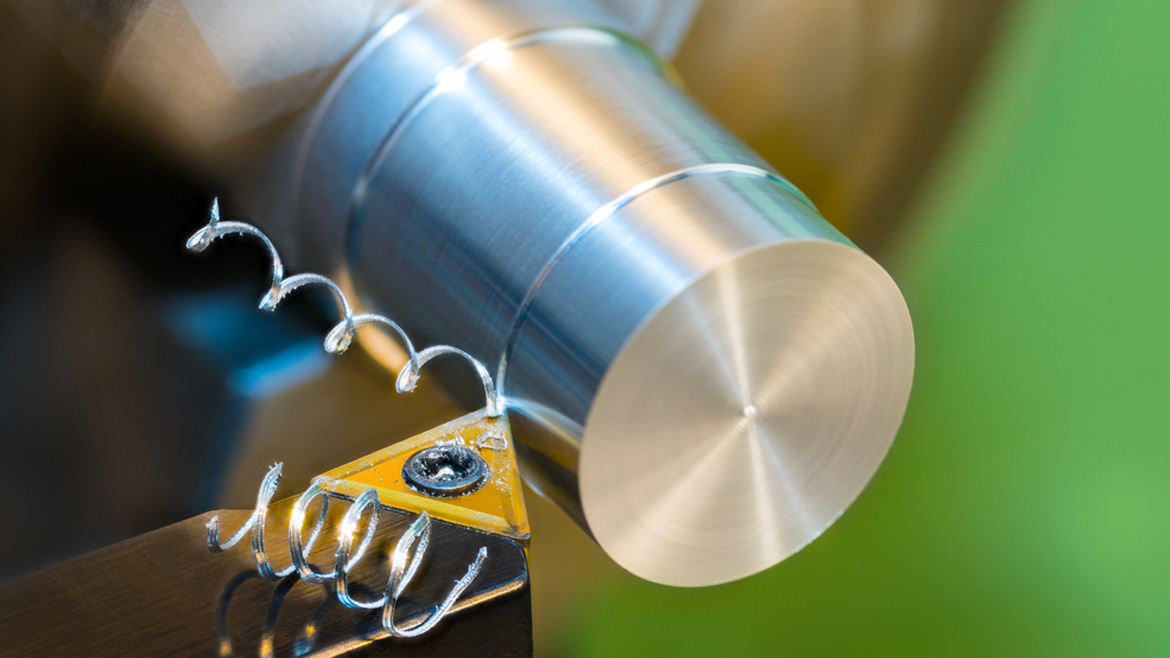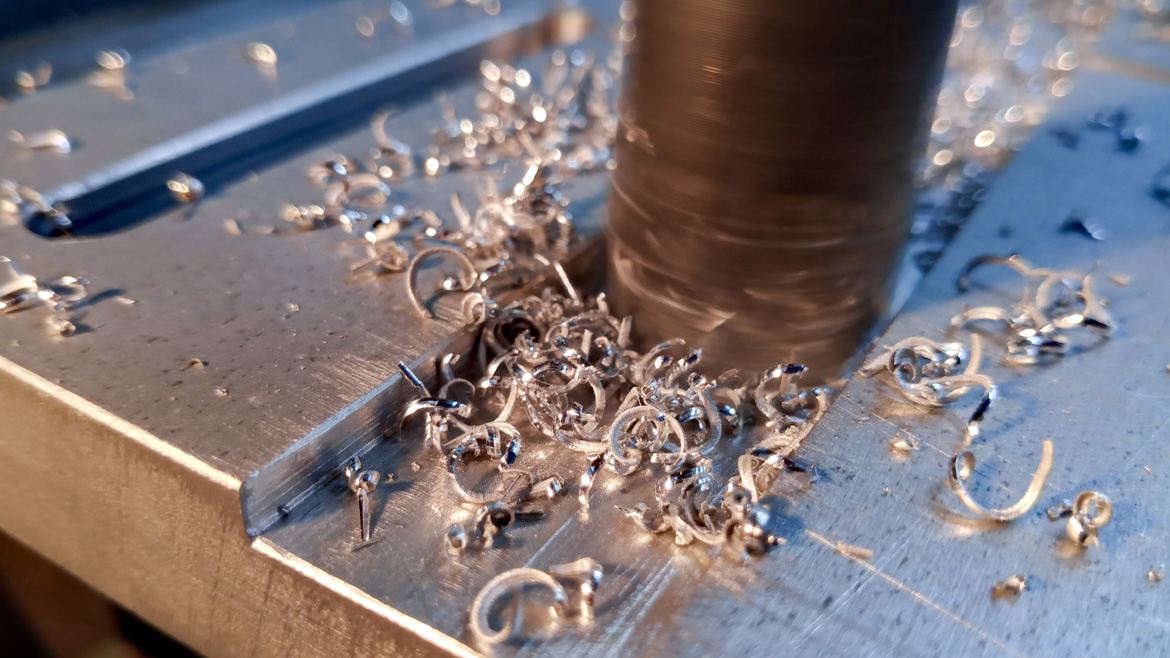How It Works - Metalworking
Consider all the products consumers buy that are made from metal. Many of these products were manufactured via machining, or the removal of metal by a cutting tool. With machining, the workpiece, or the unfinished metal component, is held in a fixture while a cutting tool removes metal, producing metallic chips as waste.
Machining can produce parts to size with dimensions within 0.003 inch (0.076 mm) or smaller… roughly the thickness of a human hair. Machining is often one of many processes used to produce a finished product from raw material.
There are numerous methods for machining a part based on the desired dimensions. But almost all machining processes can be divided into roughly three basic categories.
Turning Operations

In a basic turning operation, a cylindrical workpiece is held in a rotating fixture, or chuck. The cutting tool then moves along the length of the part to remove material while the workpiece rotates. The machine tool designed for this work is called a lathe.
With turning, the cutting tool is a single-point tool. In other words, there is a single cutting edge that is in constant contact with the workpiece.
To machine the workpiece to the proper diameter, the cutting tool often makes multiple passes, gradually reducing the diameter of the part. Many parts often require contours or radius dimensions. These are often machined with some of the final cutting passes.
In addition to a basic turning operation, parts machined on a lathe also likely involve:
- Drilling – the creation of a hole at the centerline of the workpiece.
- Boring – the shaping of a previously created hole with a single-point tool to ensure its concentricity.
- Threading – the cutting of threads on the interior or exterior of the workpiece to allow for later assembly with other parts.
- Facing –vertical cutting perpendicular to the axis of the workpiece to establish its specific length.
- Parting – the final separation of the finished workpiece from the remaining stock held in the chuck.
Milling Operations

While turning typically produces cylindrical objects, milling operations are best suited for rectangular dimensions. With milling, the cutting tool rotates and passes over the workpiece surface. The workpiece is clamped to a table and held in place by a vise or fixture.
With milling, the cutting tool is a multi-point tool, with multiple cutting edges. Each cutting edge enters and exits contact with the workpiece, which causes a cycle of heating and cooling of the tool.
Like turning operations on the lathe, there are a range of cutting operations on the mill:
- Face milling – the removal of workpiece material via wide cuts that establish the height of the workpiece.
- Pocket milling – the creation of an internal recess with a smaller diameter end mill.
- Slot milling – the creation of a long channel with an end mill.
- Groove milling – the forming of a narrow groove with a side mill.
- Profile milling – the forming of contours and unconventional shapes with an end mill.
Hole-Making Operations

Almost every part requires some sort of hole-making operation. On both the lathe and the mill, various hole-making tools are used to machine holes of various designs into the workpiece.
With hole-making operations, most tools are multi-point tools, with some exceptions. The challenge is often ensuring that the removed metal chips are flushed away from the hole to avoid damage to the workpiece or tool.
Most holes are machined in a series of steps:
- Spot drilling – the use of a short, specialized drill to accurately locate the hole and aid in a later drilling process.
- Drilling – the cutting of a hole, either through the workpiece or into the workpiece.
- Reaming – the enlarging of a hole with a multi-point tool, or reamer. The result is a most accurately formed hole with better surface finish.
- Boring – the enlarging of a hole with a single-point tool. Boring produces a more concentric hole.
- Counterboring – the creation of a larger diameter recess, often to allow for the head of a screw or bolt.
- Tapping – the cutting of internal threads with a specially designed tool. Tapping requires the tool to stop, reverse direction, and back out.
Keep in mind that this is a very general overview of machining operations. Many modern machines incorporate various elements of the lathe and mill, and certain machines are designed to produce very specific components, such as gears, crankshafts, etc.